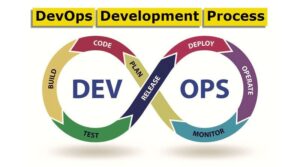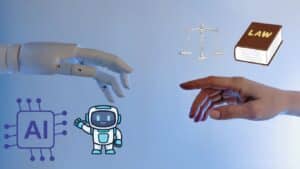
Hand touching UI of smartphone for Unlocking with face identification. Facial recognition concept.
What is facial recognition, or face recognition, exactly? How facial recognition process? What real-world uses might it have? One of the most popular identifying methods for online identity verification is biometric facial recognition.
All the information listed above can be found in this article.
Facial Recognition: What Is It? What Does Face Recognition Mean And How Does It Works?
According to its definition, facial recognition refers to any technology that may recognize or confirm a subject based on an image, video, or other audiovisual representation of his face. This identification typically functions like a face scanner to access a program, system, or service.
It is a technique for biometric identification that makes use of body measurements. In this example, the head and face—confirm a person’s identity using their facial biometric pattern and data. To identify, verify, and/or authenticate a person, the technology gathers a collection of specific biometric information about each individual related to their face and facial expression.
Software For Facial Recognition:
The face identifier technique only calls for the generation and acquisition of the images and data required to establish and record the biometric facial pattern of the individual who has to be identified by any device that has digital photographic technology.
Instead of using passwords, email confirmation, selfies or photos, or fingerprint identification, biometric facial recognition uses distinctive mathematical and dynamic patterns that act as a face scanner, making it one of the safest and most efficient systems available.
Finding many instances of the same face in a database of training images is the goal of face recognition, which uses an incoming image as its starting point.
Making sure that this process is carried out in real-time is highly challenging. Because not all biometric face recognition software suppliers have access to this feature.
Where else is facial recognition employed? Depending on the situation, the facial recognition mechanism can carry out one of two variations:
- The one in which a facial recognition system addresses a face for the first time in order to register it and link it to an identity, so recording it in the system. This procedure is also known as facial recognition for digital onboarding.
- The variation in which registration is preceded by user authentication. The database’s current data is compared to the incoming data from the camera throughout this operation.
If the face matches an identity that has already been recorded, the user is given access to the system using his credentials.
How Is Facial Recognition Completed?
Facial recognition: how trustworthy is it? What is the process of facial recognition? According to the characteristics of the camera equipment, face recognition systems capture an incoming image in two dimensions or three dimensions.
These are far more trustworthy and secure than information gained from a static image since they compare the pertinent information of the incoming image signal in real time to a photo or video in a database. The database cannot be found on the capture device because it is hosted on servers, hence this biometric facial recognition process needs an internet connection.
In this face-to-face comparison, the arriving image is statistically analysed with no room for error. So it is confirmed that the biometric information matches the person who must use the service or who is asking for access to a system, application, or even a building.
Moreover, Face recognition systems can function with the highest safety and reliability requirements. So, thanks to the application of artificial intelligence (AI) and machine learning technology. Similarly to that, the procedure can be completed in real time due to the integration of various algorithms and computing methods.
Cases Where Biometric Facial Recognition Is Used:
Focus on verification or authentication is used in face identity recognition. For instance, this technology is applied in the following circumstances:
- To increase the security of any login procedure, use a second authentication factor.
- Access to password-free mobile applications.
- Access to internet services that were already purchased (login on online platforms, for example).
- Building access (to offices, gatherings, and other facilities of any kind…).
- Payment option, both in-person and online.
- Gaining entry to a locked device.
- Checking in at hotels and airports is a tourist activity.
What Benefits Does Facial Recognition Offer?
We are occasionally asked what the benefits of facial recognition are. So, when used for remote entry identification verification, facial recognition has many advantages.
The Quickest Method:
Remote identification verification is made quick and easy with facial recognition.
User Experience:
Facial recognition systems provide a different, slick, and quick user experience, eliminating the need for wait times and time-consuming office visits or video conferencing.
Security:
Each face is distinct and has distinctive features, much like fingerprints or voices. Moreover, Facial biometrics and facial recognition algorithms are used in facial recognition systems, programs, and software comparisons.
Compliance:
Lastly, the only technique accepted as a standard for remote identity verification for high-risk operations is facial recognition through video identification (opening bank accounts, signing contracts, etc.).







